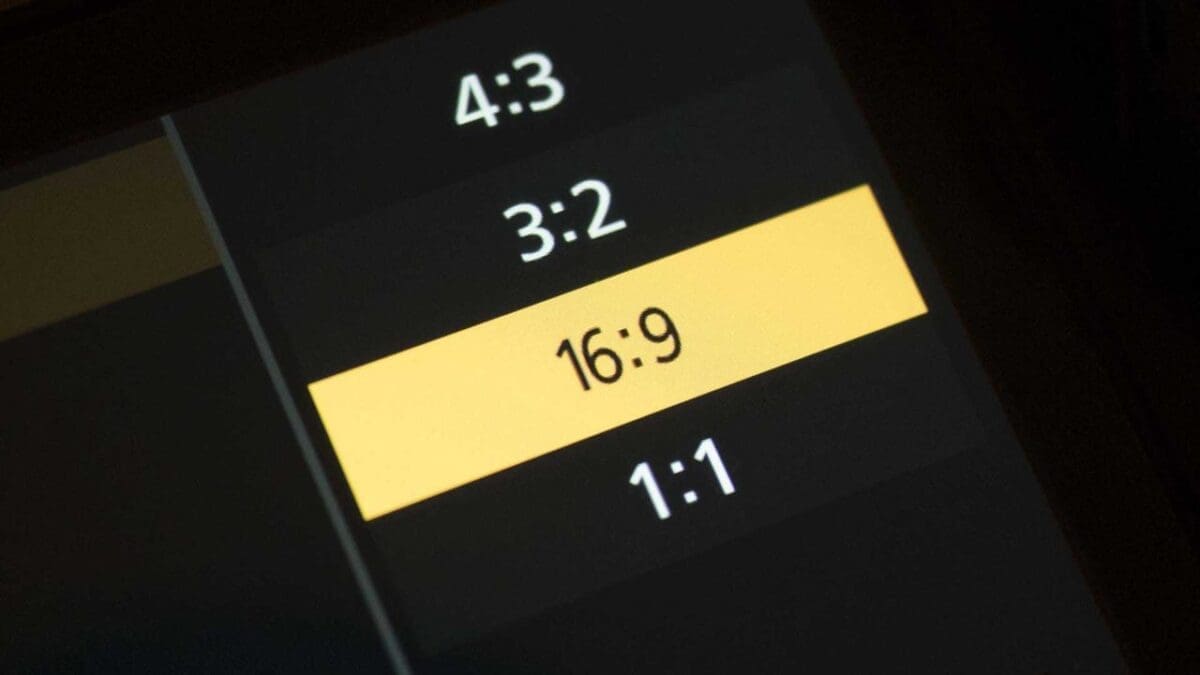What is aspect ratio in photography, and why is it important? If you are inclined to choose your image format when processing files, then it might be time you started using your camera’s aspect ratio settings.
Consequently, an overwhelming majority of images put out by digital cameras have an aspect ratio of 3:2 and 4:3.
There are many other aspect ratios available that work quite well, but in the bulk of these cases, the aspect ratios are applied using the crop tool as a postscript during image processing.
Post-capture cropping is okay, but for the most part, images work best and have better composition if their aspect ratio is considered at the shooting stage.
It works out better if you decide to crop a landscape image to 16:9 or a wider panorama format when you are looking at the scene, for example, than when you are looking at the image and come to the conclusion that the foreground is empty and dull.
A 16:9 crop makes a good solution in most situations, but you are much more apt to produce a great composition if you consider it before pressing the shutter release.
A 35 mm film frame measures 36x24mm, which means it has an aspect ratio of 3:2. While their actual dimensions may vary, the image sensors in full-frame and APS-C format cameras have this identical aspect ratio.
However, many compact cameras and Micro Four Thirds models have sensors with a 4:3 aspect ratio.
What is aspect ratio? Get the view
A lot of cameras have an aspect ratio control in the menu. After you capture an image, this feature allows you to designate its shape. In nearly every instance, the aspect ratio is applied to the JPEG files, but the accompanying raw files are uncropped and have an image from the whole sensor in the native format.
This comes in handy if you make any framing errors or if you wish to experiment with different aspect ratios without commitment.
What is aspect ratio in mirrorless cameras
Compact System Cameras (CSCs) reflect any changes made to the aspect ratio – in the viewfinder or on the camera’s main screen. A few of the SLRs available are capable of displaying guides in the viewfinder to signal an alternative aspect ratio, or you have the option to shoot in Live View mode, which will provide you with a live preview of the image as it will be captured.
You can also hold a card over the viewfinder (or screen), or use your imagination. The point is to keep the aspect ratio in mind as you compose the image.
Images that are reviewed in-camera will be shown with the selected aspect ratio, so continue to review your shots to ensure that you are happy with the composition.
What to choose
Nearly every camera that allows you to select aspect ratio will have settings such as 3:2, 4:3, 1:1, 16:9, and 5:4, but all it takes is a little imagination and you can compose images in any ratio.
Familiarizing yourself with a new aspect ratio takes time, so once you have decided which one you want to try, stick with it for at least a few days – maybe even a week – and shoot only in that aspect ratio until you feel comfortable enough to move on to another one.
Once you become adept at composing images in a variety of formats, you will find that you become much better at surveying a scene to determine which aspect ratio would best suit it.
Square format, or 1:1 images, is quite popular right now, partly due to the retro image craze. This format is especially compatible with symmetrical compositions; however, it is also popular for portraits, and even landscapes.
16:9 images are often seen on TVs, but for obvious reasons, they only appear in landscape format. This aspect ratio works well and it is attractive with landscapes, but 16:9 upright images can look nice also.
While you do not see them as much these days, 5:4 images used to be quite common in the heydays of large format cameras. This aspect ratio works for a wide range of subjects, especially portraits.

What is aspect ratio: how to compose
Composing an image in 16:9 square format is not all that different from composing one in the more boilerplate 4:3 or 3:2 ratios. Subject placement and spacing are equally important in both formats.
When following the rule of thirds, however, the dividing lines that guide composition will shift according to the frame’s ratio. The proportions should still be equidistant, but the grid looks different in a 16:9 and a square image.
As stated earlier, the equally-sized sides of square images are quite compatible with symmetrical compositions and central subjects. If you go the way of symmetry, however, make sure to be as accurate as possible.
Once you have familiarised yourself with the rule of thirds with each aspect ratio, try pushing the boundaries by intentionally breaking the rule.
Get the crop
Even if you set the aspect ratio on your camera, you will probably want to crop raw files with a particular aspect ratio. This is a simple task in Adobe Camera Raw; it is just a matter of clicking and holding on the crop tool until the dropdown list of options is revealed.
You can choose one of the preset options or set your own custom value. Then, when you use the crop tool, it will set the correct aspect ratio for you.
It is just as simple to crop JPEG images with a particular aspect ratio in the majority of image editing software.
With Photoshop CC, you simply select the crop tool and then set your desired aspect ratio via the Ratio dropdown box in the tool options bar at the top of the screen. You can also add your own figures for the height and width in the boxes alongside.



